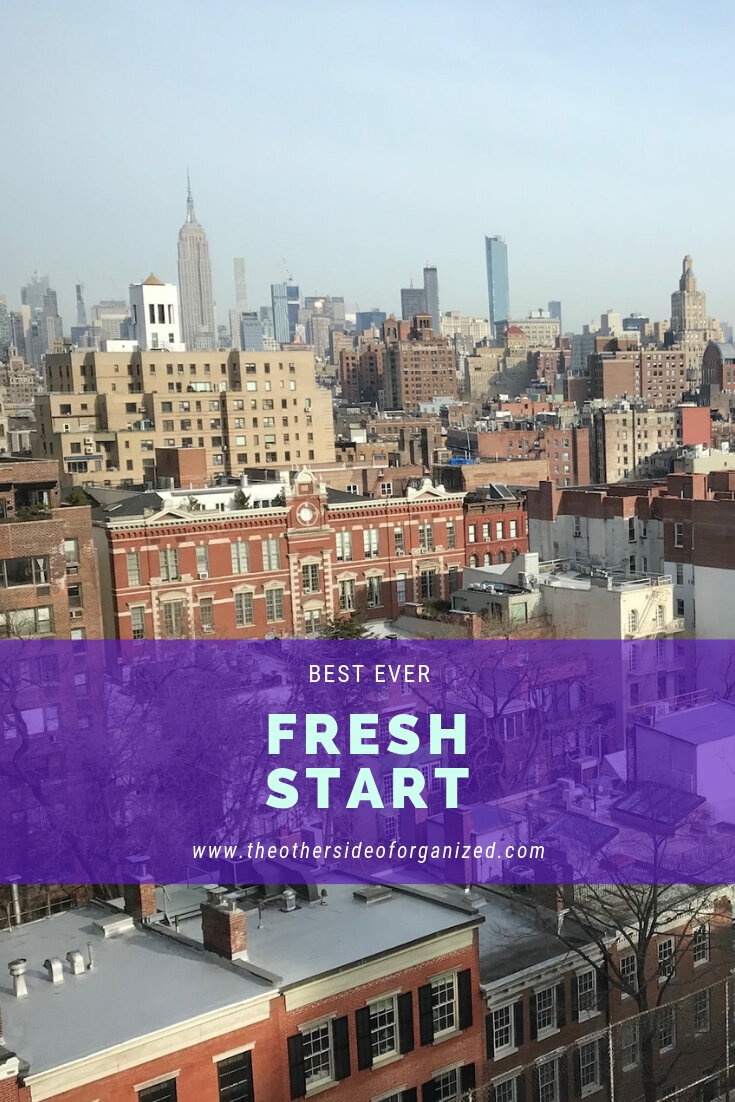An essential part of getting a fresh start is being able to let go. It’s challenging to move forward when we hold on to life’s physical stuff, habits, thoughts, or relationships that don’t support who we are or where we’re going. Even though we may intellectually understand this, doing something about it isn’t always so simple. Our belongings often come with emotional attachments, which make it more difficult to part with them. Of course, there’s no need to let go of things just to let go. However, if you’re in a transition, want less stuff, or are clearing out your parents’ home, then releasing to move forward is an integral part of that process.
Last week, I was invited back as a guest on WNYC’s “All Of It” show with the fabulous host, Alison Stewart.
Click here to listen to the podcast.
Listeners had the opportunity to call in and ask their most pressing organizing questions. While we talked about many things, the focus of this show was primarily on clearing out your parent’s home. Alison started the show by reading a passage from her book, Junk, which she wrote after clearing out her parents’ home of 55 years with her sister and friend.
One of the ideas we discuss in the organizing industry is “safe passage.” What we’ve noticed is that when we help our clients find meaningful homes for the possessions they want to let go of, it eases their emotions and attachments and helps them feel good about releasing them. So, for example, giving items to family, friends, or charities that benefit or that the recipients appreciate provides this safe passage.
Many excellent resources were discussed during the WNYC show. I’ll share those along with some additional ones.
Resources for Letting Go
1. Art Supplies – Materials for the Arts is a New York organization that collects art supplies, art books, audio and video equipment, beads, jewelry, fabric, flat-screen TVs, musical instruments, office supplies, paper, picture frames, power tools, trim and sewing notions, and more. They make the materials available for free to nonprofit organizations with arts programming, government agencies, and public schools.
2. Books – Better World Books is a for-profit e-retailer that collects and sells new and used books online and matches each purchase with a book donation to Book-for-Book. Sales generate funds for literacy and education initiatives in the United States, the United Kingdom, and around the world. Visit their website to find a book drop box near you.
3. Clothing and Household – Many places accept donations of clothing, household items, books, furniture, toys, electronics, and a variety of things. Depending upon your location, some of these organizations will pick up your items. Resources include:
4. Medical Equipment and Supplies – The Afya Foundation supports ongoing health missions worldwide with a focus on disaster relief. Recognizing that after surgery, illness or death, families often have unneeded medical supplies and equipment, they accept these supplies and give them a second life by donating them to others in need. They will take underpads, adult diapers, gauze, IV supplies, manual wheelchairs, walkers, canes, crutches, and more.
5. Records (LPs and More) – WFMU is having a Record Fair April 26-28, 2019 at the Brooklyn Expo Center. They are collecting interesting and eclectic vinyl records and CDs. They will use the records to fill in their music library and generate funds for the station.
The Archive of Contemporary Music is a non-profit that collects and preserves recorded popular music and music-related materials from around the world. This includes all music formats (LPs, CDs, 8-tracks, etc.), music-related memorabilia, posters, personal papers, press kits, sheet music, songbooks, books, videos, and more.
6. Recycling and Trash – When clearing out a home, heavy lifting will be involved. The Junkluggers are an excellent resource for taking away trash, donations, and recycling. They aim to donate as much as possible and will provide you with a tax-deductible receipt. When I cleared out my parents’ home of 60 years, they were my go-to source.
7. Reflections – Letting go often involves the physical process of removing things from their environment. In points 1-6, I provided you with resources for doing this. Another aspect of letting go is navigating the emotional part. Like Alison Stewart, I also cleared out and sold my parents’ home this past year. It was an emotional process and a big learning experience. It’s one thing to help others, it’s quite another to manage a project like this for your own family. It gave me a deeper appreciation of the emotions and challenges my clients experienced when I helped them. While I wrote many posts during this process, for my final post in the series, How to Say Goodbye and Let Go With Love, I shared ten gentle ways that I learned to let go.
Behind the Scenes at WNYC
To listen to WNYC's "All Of It" January 18th podcast with listener questions, their stories, my responses, and more, click here. My segment is the first 20-plus minutes.
To move forward and get a fresh start, letting go happens. Your focus and energy will be on physical possessions or emotional attachments. It helps to have tools and resources. Do any of these resonate with you? Do you have other favorite letting go resources? I’d love to hear your thoughts. Join the conversation!











